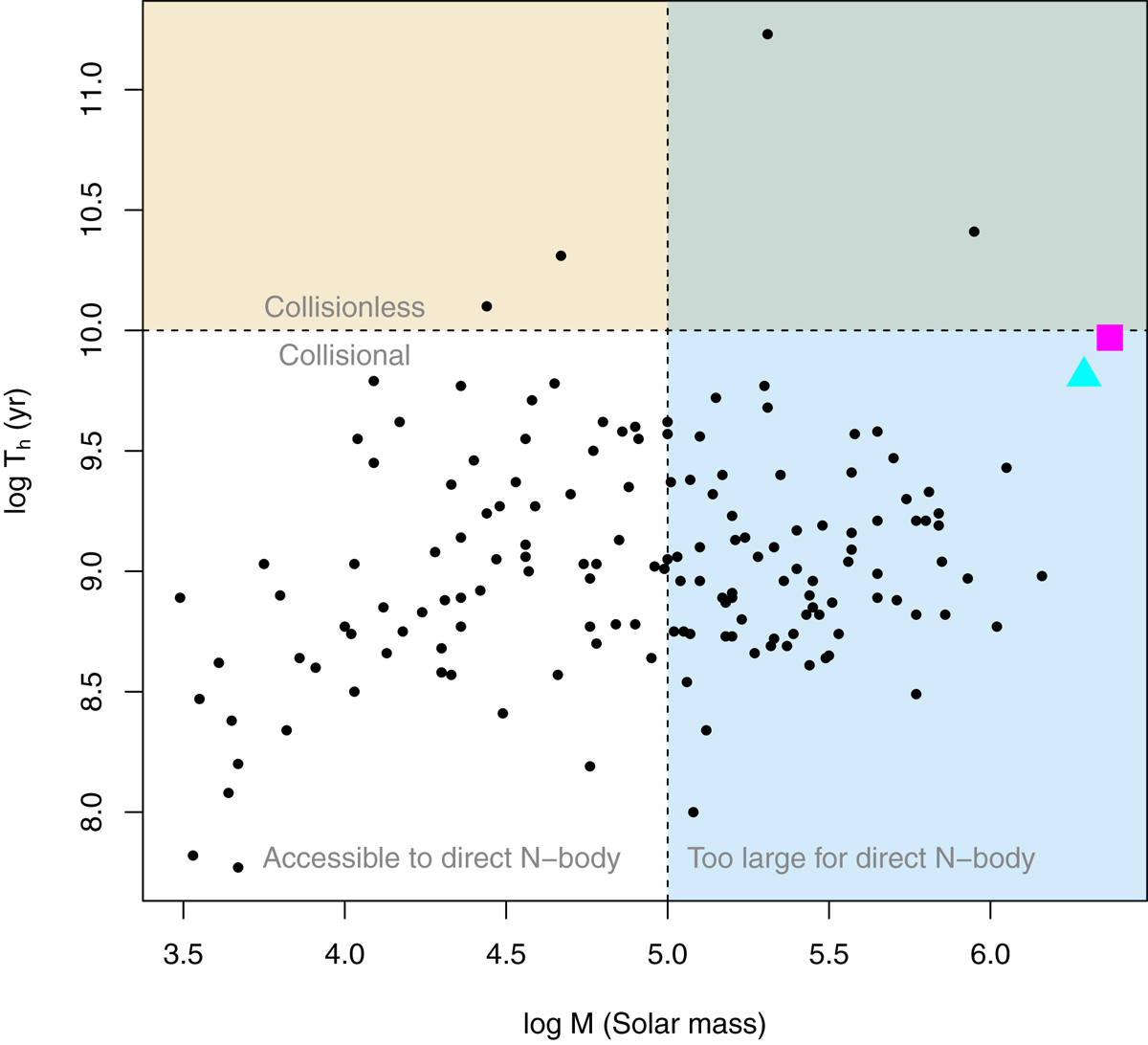Fig. 1.

Globular star clusters of the Milky Way and satellites from McLaughlin & van der Marel (2005). Log half-mass relaxation time (in years) is plotted against log total mass (in Solar mass). Globular clusters Ω Centauri and M 54 are shown as a magenta square and cyan triangle, respectively. Assuming a mean stellar mass of 0.5 M⊙, star clusters with a mass above 105 M⊙ (shaded in light blue) contain 2 × 105 stars and can be simulated only with great computational effort, and they are limited to a handful of realisations. This is especially true if a realistic binary fraction is included, at variance with smaller systems (grey shaded area) that are well within the capabilities of current direct N-body codes. Star clusters with a relaxation time over the typical globular cluster age (≈10 Gyr) can be regarded as collisionless and are shaded in peach and dark green. According to this definition, Ω Centauri and M 54 are only slightly collisional, but clearly not accessible to modelling through direct N-body simulations.
Current usage metrics show cumulative count of Article Views (full-text article views including HTML views, PDF and ePub downloads, according to the available data) and Abstracts Views on Vision4Press platform.
Data correspond to usage on the plateform after 2015. The current usage metrics is available 48-96 hours after online publication and is updated daily on week days.
Initial download of the metrics may take a while.


